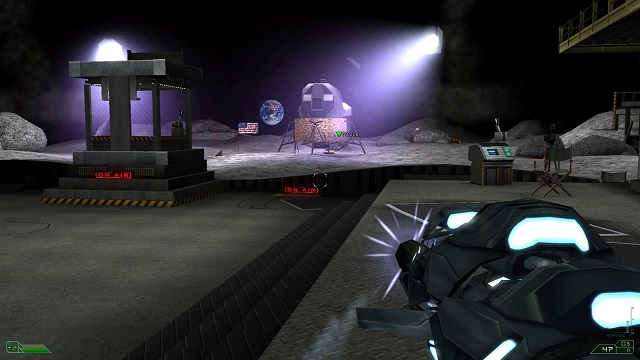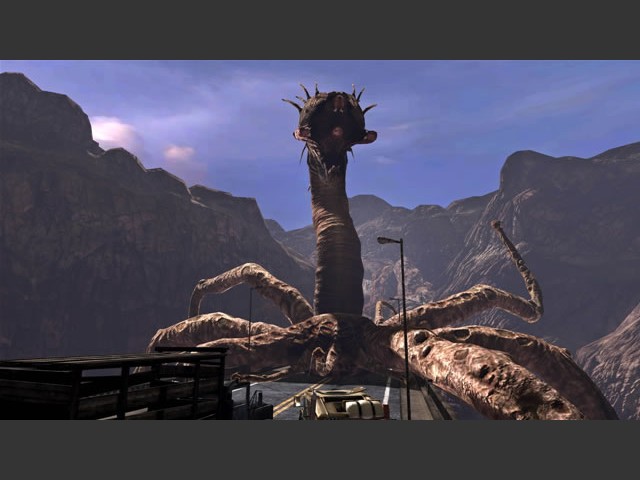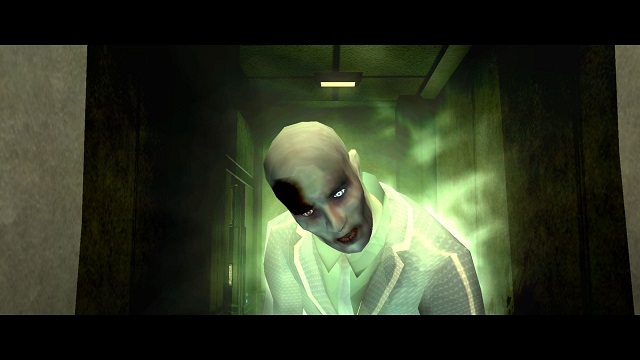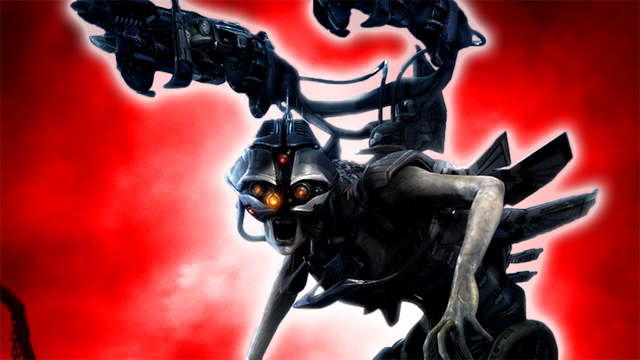So, you’re looking to Naruto-run your way into the government’s most secure facility. What do you really need to know before you join countless hundreds in the Nevada desert? More importantly, can video games of the past simulate this dangerous event so you don’t actually have to go through with it? Well, probably not. But now feels like a good of a time as any to look at Midway’s Area 51 series and how it rose to prominence before crashing down to Earth harder than a UFO.
Area 51 History | The arcade original
Anyone who grew up in the last gasps of American arcades has probably run into an Area 51 cabinet. The classic gunshots and smooth background music remain ingrained in my head after years of playing Marvel vs. Capcom in its general vicinity. Created just a few years removed from the Mortal Kombat craze, Area 51 digitized real actors and used them for an eye-popping shooting gallery. The combination led to sales of over 20,000 cabinets, making it a smash in that market. The game received a far less warm reception at home on PC, PlayStation, and Sega Saturn. This is mostly because Area 51 is only truly playable with a neon-tinged light gun, a peripheral that many console owners lacked. At least they weren’t forced to play with a tiny plastic “gun” like the owners of the Tiger handheld.
ALSO: Storm Area 51 meme prompts US Air Force response
Whether you’re shooting the franchise’s unique Kronn aliens or the zombies they’re creating with their ninth plan, you’ll want a fast trigger finger to take them down. As is standard for the genre, you start off with a single weapon or an automatic pistol in this case. You can upgrade your firepower and heal with various pickups hidden in the stage as you move from spot to spot in the facility, stopping to shoot groups of enemies that pop out of every corner. While the gameplay here isn’t the most innovative, its relative accessibility made it stand out among the competition. Before long, the inevitable sequel started development.
Area 51 History | Exploring the base
We’re now in 1998. Fighting games have overtaken light guns as the dominant genre in arcades; the last such shift before the end of an era. Despite this, Area 51 still held cache, and many operators traded out their old cabinets for the new Area 51: Site 4. Featuring improved 3D environments paired with the same digital actor technology, Site 4 chose to stay the course in terms of gameplay. While there was an added training mode to add variety, both versions of the game involved taking on the same crew of aliens and zombies. The biggest shift comes in the boss fight, where you fight an alien queen that seems more than inspired by the silver screen.
Midway also took advantage of Area 51‘s popularity by releasing a duel cabinet around this time. It featured the original game and Maximum Force, a light gun game in a similar style by the same developers. Rather than aliens, Maximum Force casts you as an agent dealing in counter-terrorism. Originally released in 1997, Maximum Force received criticism for being extremely similar to the more popular Area 51. Therefore, the cabinet pairing only made sense. Time went on, and by the time Midway would get back to the franchise, the entire gaming landscape had shifted.
Area 51 History | E.T. comes home

The Midway that published 2005’s Area 51 was much different than the Midway that published the original duology. Once a titan among publishers, Midway always struggled to translate its properties to the home market. Once arcades declined into irrelevancy, the publisher was forced to make big moves, and many didn’t pay off.
This first-person shooter, released on PS2, Xbox, and PC, was somewhere in the middle. Famously starring the voice talents of X-Files star David Duchovny and controversial musician Marilyn Manson, the game made a big splash on PS2 due to the console’s lack of big shooters. It made less of a wave on its other two platforms, receiving middling reviews and failing to leave much of an impact.
Despite that reception, there are certainly things to praise about this loose remake. While the original was all about white-knuckle action, this release tried to bring players a more cinematic experience. There’s a scanner borrowed from Metroid Prime that provides insight into the various items you find around the facility. Combat also remains varied throughout, with a good arsenal of weapons that features dual-wielding (a must-have with Halo 2 on the market) and alien weapons. The black hole cannon was the best firearm as it was an overpowered juggernaut of a gun that always dominated multiplayer sessions.
Area 51 History | Classified beyond recognition

Even if you’ve heard of Area 51 in its various other forms, you probably have not heard of Blacksite: Area 51. Wholly unrelated to either the prior FPS or the light gun games, Blacksite takes the opportunity to ape on the trend that was just starting when Midway’s first FPS hit. You’ve got brown environments, a squad of soldiers, military tactics, and the ability to aim down the sights.
It’s Call of Duty with aliens, only infinitely more forgettable than any game with that premise should be. It’s got bland vehicle sections, bland multiplayer modes (online-only of course), and bland settings. While there is a hint of originality in its plot, which attempts to satirize the war in Iraq, there’s nothing that can save Blackside from the void of mediocrity.
In fact, if you remember Blacksite at all, it might be due to the controversy surrounding the game. Designer Harvey Smith (who had previously been the lead designer on the two original Deus Ex games) spoke out publicly about the game’s low review scores just two weeks after release. A Wired correspondent was at the speech, reporting on the game’s failures and airing Midway’s dirty laundry in the process. The designer was fired just one day after the postmortem where he said that Blacksite went from “alpha to final” and that the project “was so fucked up.” He went on to become the co-creative director of Arkane Studios, the studio behind the Dishonored series.
Area 51 History | Escaping the desert

As of now, the Area 51 series remains locked away in the vault of video game history. Warner Brothers owns the IP and the games, having bought out most of Midway’s assets after its liquidation in 2009. Neither of the more modern games is available on digital platforms. They’re not backward compatible on Xbox, and the PC versions are lost to time and compatibility. The arcade versions never got a re-release during the light gun revival of last decade, even though motion controls would work wonders to make them playable. If gamers really wanted to raid a secret facility, they should Naruto run right over to WB headquarters and ask why Area 51 and other parts of Midway history aren’t worthy of a remaster. If nothing else, the security over there is probably way less strict.
GameRevolution does not condone the raiding of any government building or game publisher’s office. Be smart out there.











